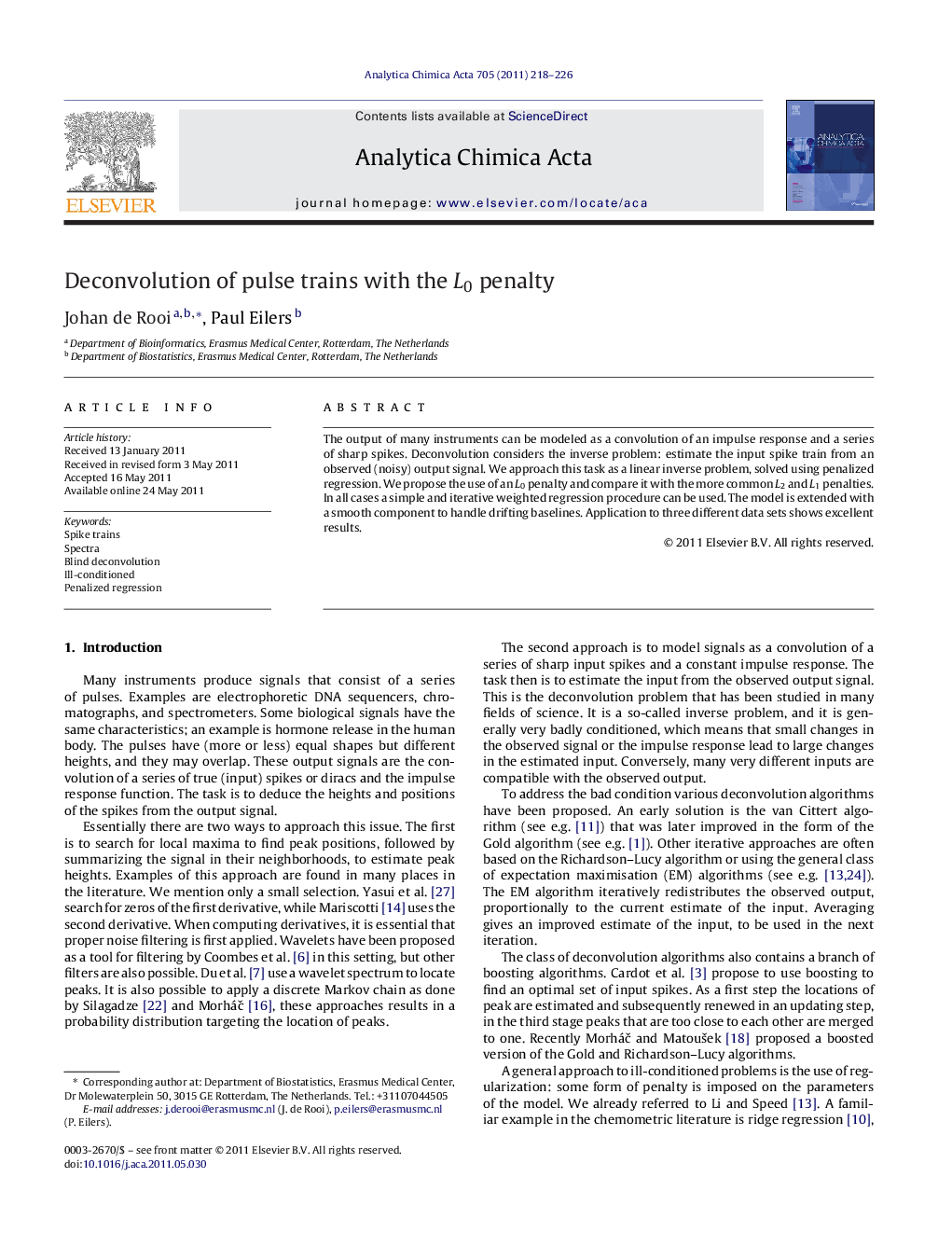| Article ID | Journal | Published Year | Pages | File Type |
|---|---|---|---|---|
| 1166690 | Analytica Chimica Acta | 2011 | 9 Pages |
The output of many instruments can be modeled as a convolution of an impulse response and a series of sharp spikes. Deconvolution considers the inverse problem: estimate the input spike train from an observed (noisy) output signal. We approach this task as a linear inverse problem, solved using penalized regression. We propose the use of an L0 penalty and compare it with the more common L2 and L1 penalties. In all cases a simple and iterative weighted regression procedure can be used. The model is extended with a smooth component to handle drifting baselines. Application to three different data sets shows excellent results.
Graphical abstractFigure optionsDownload full-size imageDownload as PowerPoint slideHighlights► Deconvolution of pulse trains is performed using penalized regression. ► We propose the use of an L0 penalty and compare it with the more common L2 and L1 penalties. ► The model is extended with a smooth component to handle drifting baselines.
